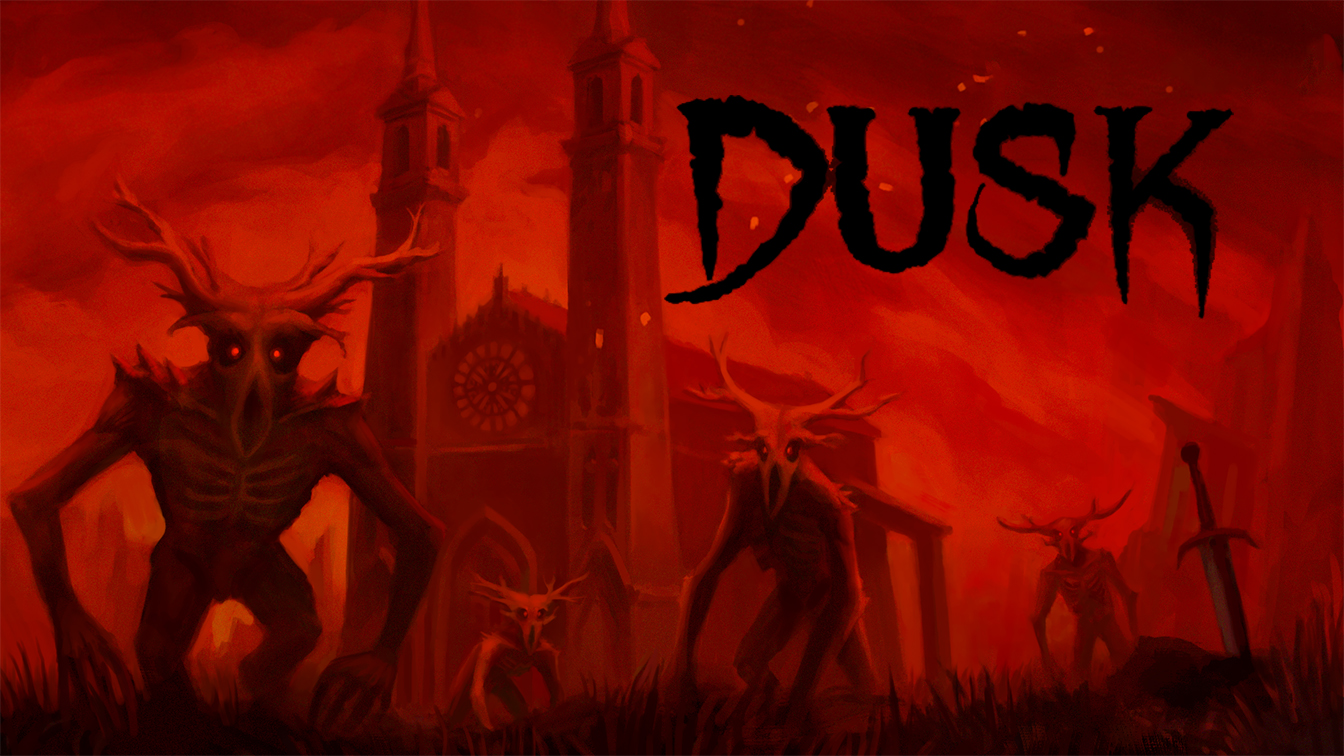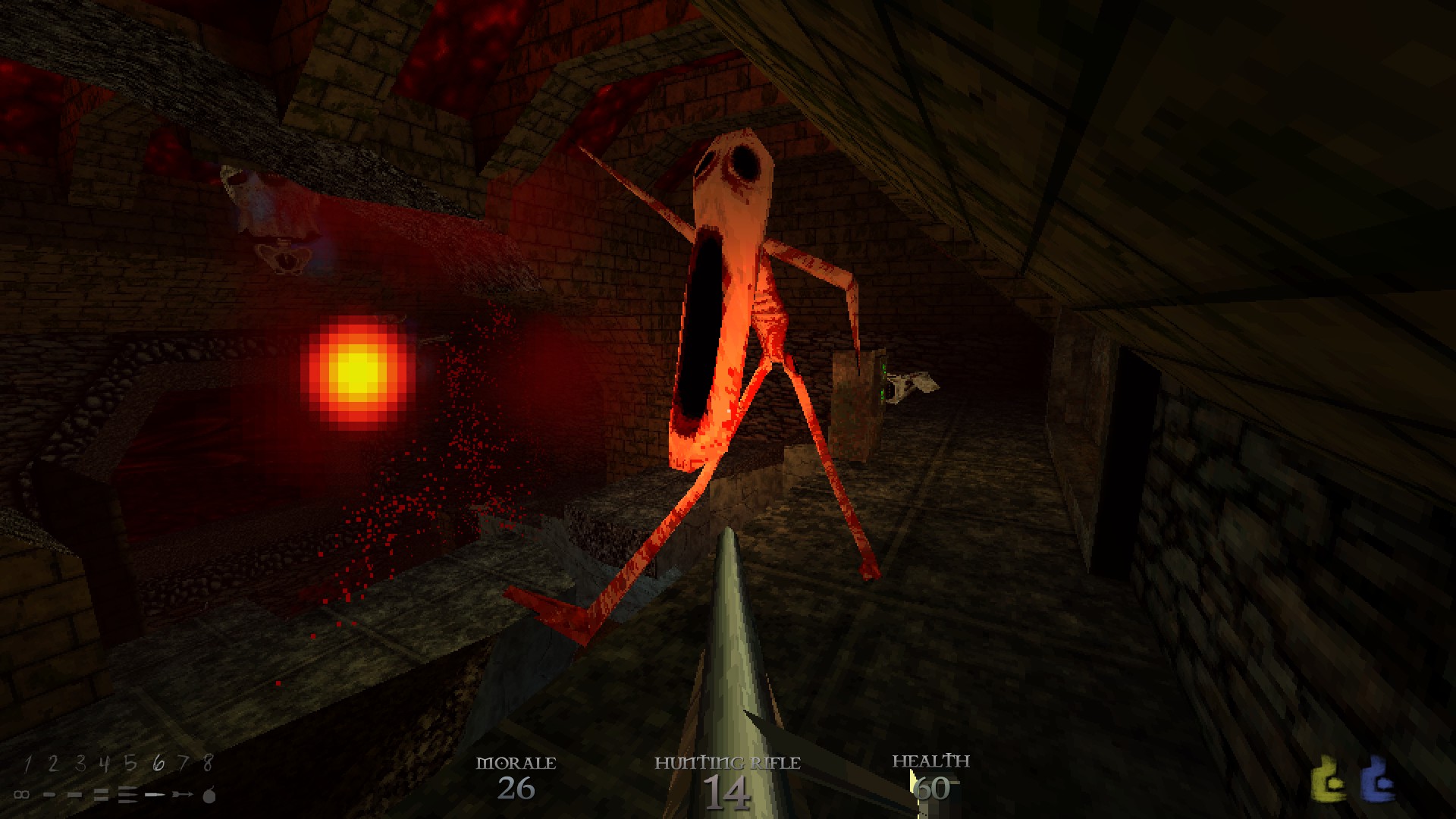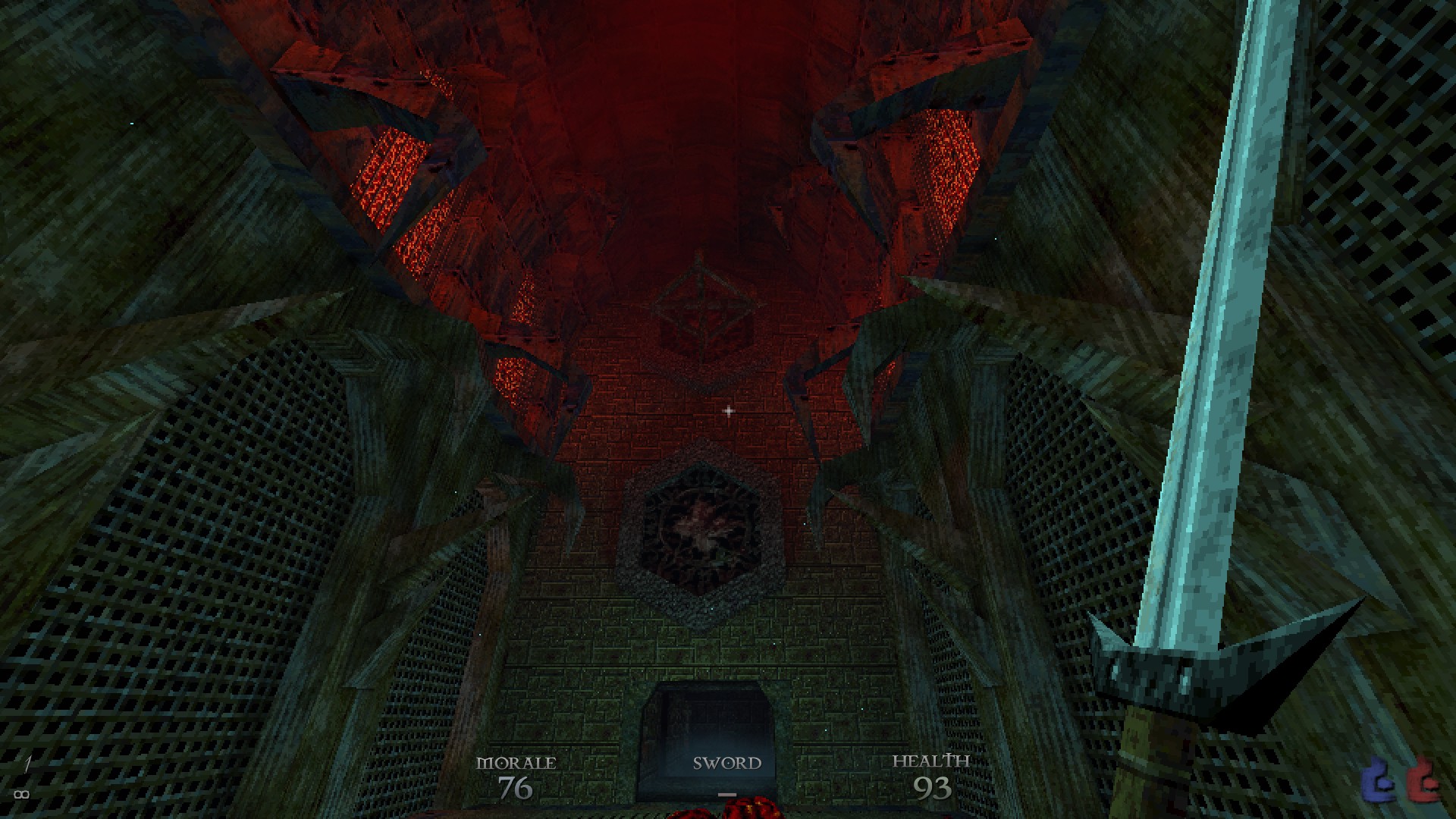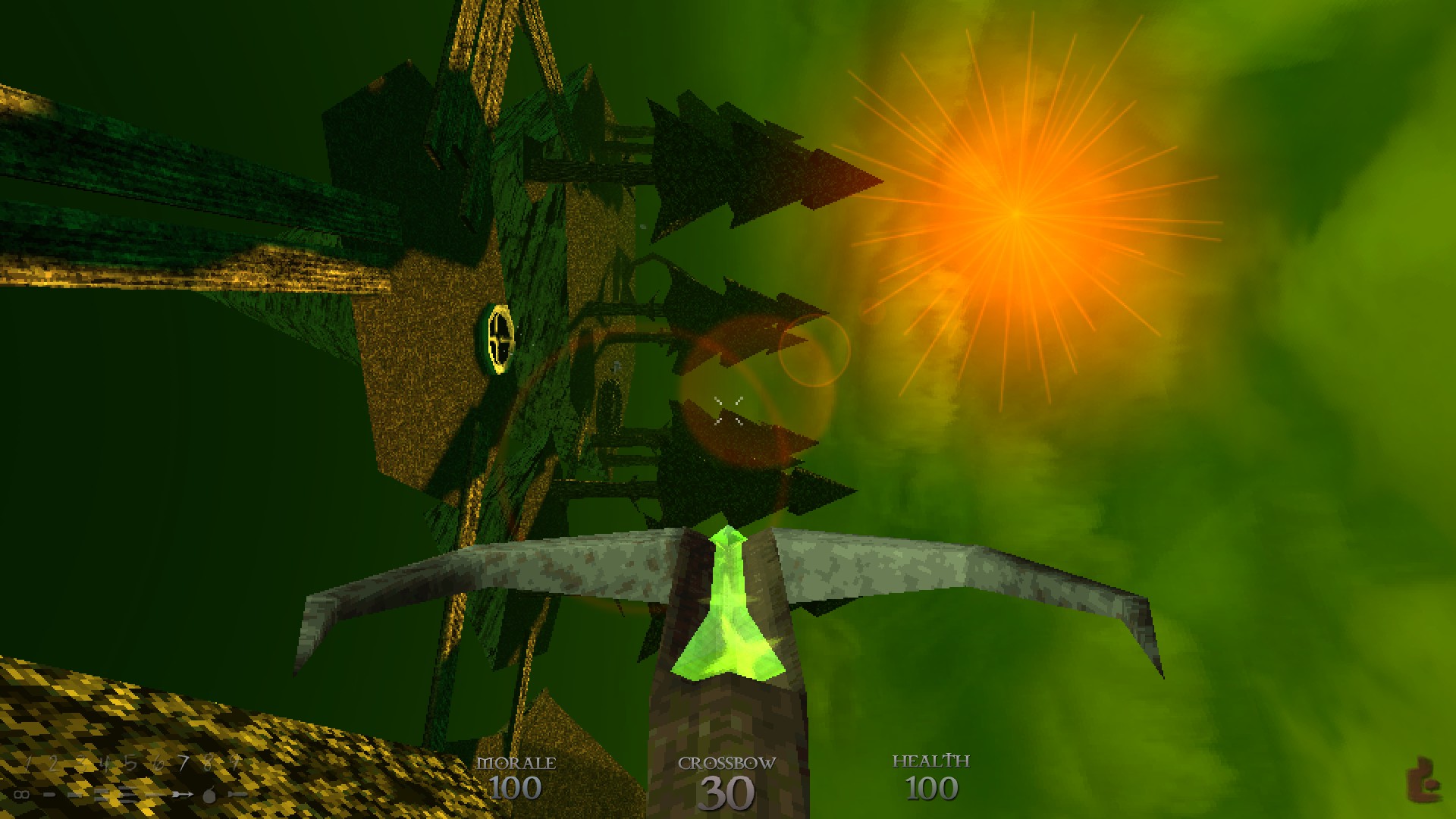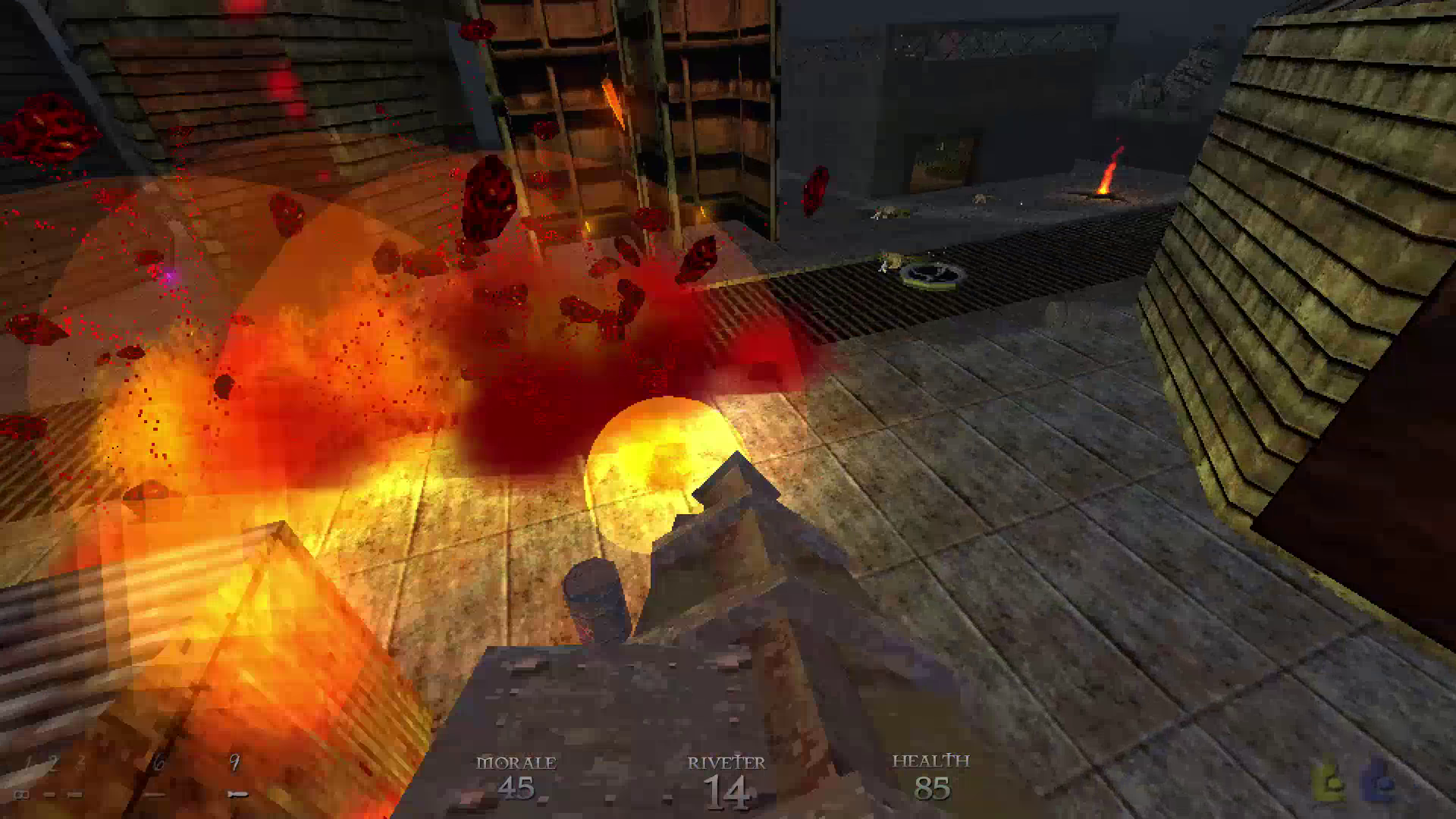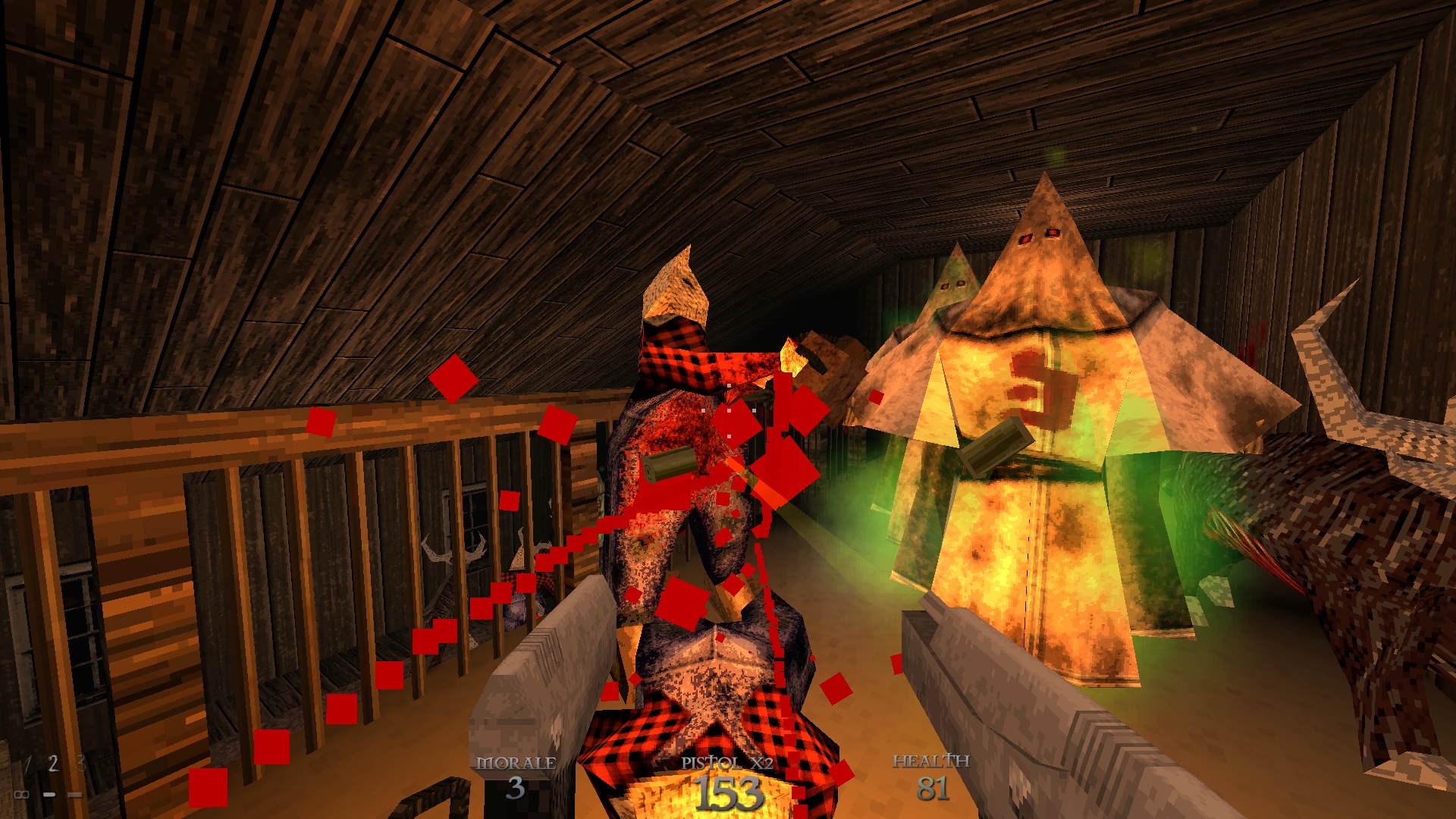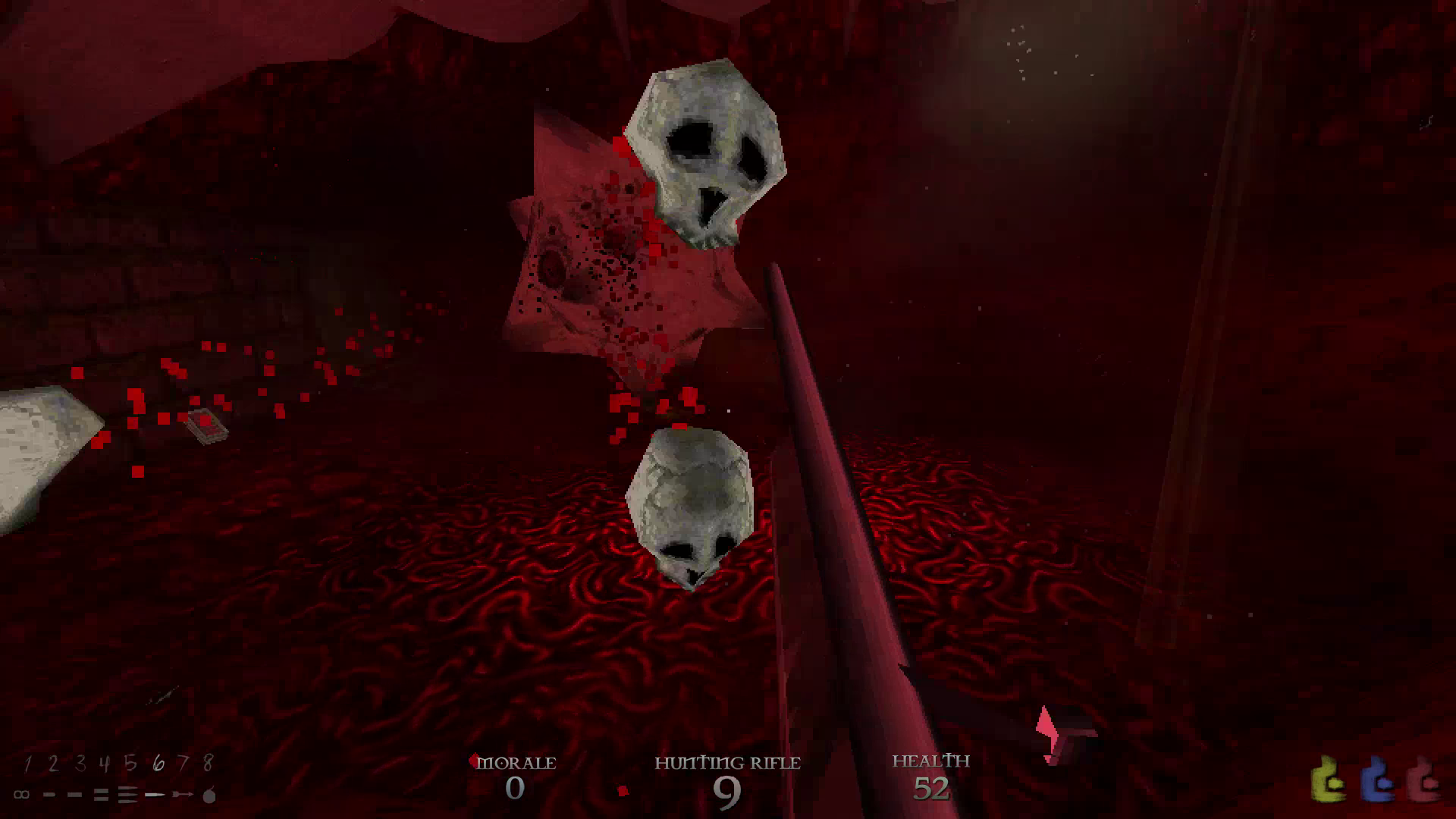The third and final episode was worth the wait, Dusk is a new messiah.
Type: Single-player
Genre: FPS, Horror
Developer: David Szymanski
Publisher: New Blood Interactive
Release date: 10 Dec, 2018


There will be blood
I already wrote about the game when its first episode appeared, but I will remind you that Dusk is developed by David Szymansky, with eerie ambient music and industrial tracks by Andrew Hulshult, and published by New Blood Interactive. It’s an FPS inspired by the golden age of the genre in the 90s, with titles such as Doom, Redneck Rampage and Quake. Our adventure takes place in the countryside of Pennsylvania, and as the game progresses we realize that some sort of otherworldly corruption has spread from the depth of shady basements to entire cities.
In order to get a retro or neo-retro FPS right, there are three pillars. Combat, atmosphere and level design.
Atmosphere
Dusk’s atmosphere is particularly well crafted, with gloomy and dirty visuals dripping with pixels, harrowing sounds supported by creepy music. The soundtrack absolutely hits the nail, great work there. The horror is tangible, you could touch these disgusting and sharp surfaces and catch tetanus. Some of the new enemies are particularly well introduced, with a calm before the storm that lets tension grow before finding yourself face to face with a horrifying creature that sends you into a panic. Episode 2’s invisible monsters were a great moment of terror, and in episode 3 you hear some heavy breathing and gurgling through the walls for a few minutes, before being assaulted by deformed faces with their arms flailing and thrashing about. Pure madness, both grotesque and scary.
Something else that I particularly enjoyed was progression through the environments. Episode 1 had lots of moments on the surface with fields, barns, and forests before diving deep in caves and mines. Episode 2 was a bit less interesting, with too many industrial backgrounds. Although, towards the end, it seemed like something was not right and there was the beginning of a shift towards abstract levels. And that’s exactly where Episode 3 went, with levels more in the style of Quake, otherworldly cathedrals, lava flows, walls of flesh and houses with impossible geometry. There is a lot of variety, it never gets old.
Level design
Episode 1 has semi-open levels, alternating between closed indoors areas and vast outside areas. Episode 2 is focused on big vertical arenas and violent corridors. Episode 3 features more prominently complex levels in the vein of id Software, with passages closing in on themselves, and some maze elements. But the complexity is never too much, there were just one or two moments when I had trouble orienting myself, which is perfectly acceptable. In any case, the common thread is that level design in Dusk is excellent from start to finish, with logical progression, secrets, variety, and whenever there is complexity it’s well done and not confusing. Towards the end there is also an astonishing level in which you can play with gravity, it’s surprising and destabilizing, I really appreciated this eerie break in between two carnage.
Combat
Movements are very fast-paced and the arsenal feels great, with a thrilling double shotgun, a devastating rocket launcher and other cool weapons such as a piercing crossbow. Enemies stagger under fire or explode in a mist of blood with big chunks of meat raining down on you. Yummy. Only the basic gun is a bit disappointing, but overall everything is well balanced. It’s even more violent than Quake, although not to the peaking level of Brutal Doom.
Episode 1 starts off easy, then episode 2 has many big fights reminding me of Serious Sam. The lack of aerial enemies is compensated with a lot of verticality. Finally, Episode 3 adds such aerial enemies, which leads to a big variety of interesting fights, and you are often forced to switch weapons to adapt to the situation at hand. Episode 2 was eventually starting to overstay its welcome with repetitive fights in repetitive levels, but episode 3 adds many new enemy types and finishes the game on a high note. I loved it.
What else is there?
Apart from the main campaign which can keep you busy for 8-12 hours, there are three levels with infinite waves for instant fun and violence. And of course Duskworld, the multi-player component, for those who wish to get back to the early days of deathmatch. On a technical standpoint, I have nothing to complain about, everything can be modified, from the field of view to key bindings. One small regret is that the player character does not speak nor shows its face in the HUD, I wish he had been characterized more, but it’s not important
Verdict
Dusk’s only weakness is that Episode 2 drags on a bit too long in industrial environments, and you have to wait until Episode 3 to see a new batch of interesting enemies. Overall, the game achieves faithfulness to the 90s shooters while adding a fresh perspective and a dose of the unknown. David Szymanski manages to get close to id Software’s formula, while adding his own style, varied levels and monsters, and a welcome progression in the environments created. Compared to the rest of the market of neo-retro shooters, Dusk has all the right qualities to be the king : no overuse of bullet sponge monsters or small pesky aerial enemies, no wandering in huge empty levels, no repetitive corridors, it’s a masterpiece, and without the shadow of a doubt I elect Dusk to a cult status along Doom and Quake. It is a must-have for anyone enamoured with the genre, a spiritual successor to Quake that manages to crystallise the best parts of this game while having its own identity, pushing towards Lovecraftian horror rather than science-fiction. A brilliant success.

